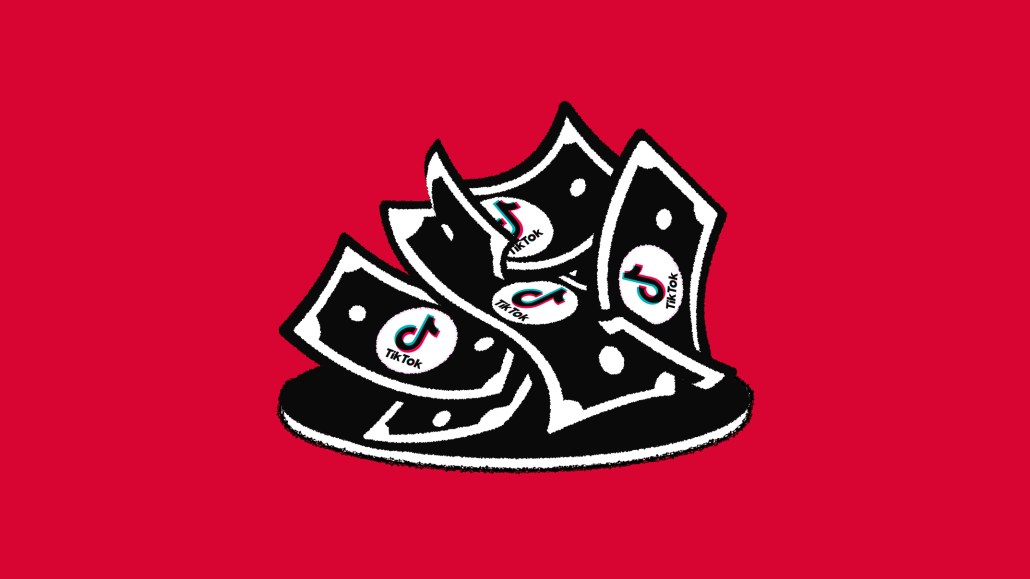How Abercrombie & Fitch is using TikTok to reintroduce the brand and ‘reflect back who our consumer is today’

Abercrombie & Fitch is using TikTok to reintroduce the brand to millennial and Gen Z consumers.
The 130-year-old brand is running a paid and organic ad strategy on the platform as well as working with TikTok creators to do so. The reintroduction follows Abercrombie & Fitch’s overall brand transformation in recent years as it has slowly shed its reputation of preppy exclusivity for early Aughts teenagers to become a more inclusive brand aimed at twentysomethings seeking fashionable basics.
That transformation, which came about under CEO Fran Horowitz, who joined in 2017, had to come first and be seen as authentic before the brand could start advertising those changes on a platform like TikTok, explained Megan Brophy, senior director of marketing at Abercrombie & Fitch.
“It takes time for customers to rediscover the brand and to trust that [the transformation] is authentic and will stick around,” said Brophy, adding that Abercrombie & Fitch has expanded its product sizing and worked to be more representative of the diversity of its customers in models and elsewhere, given that “diversity can’t just show up in one space” but rather has to be in everything the brand does. “This has been a several-year journey that people have started to notice more recently.”
During the second quarter of 2021, Abercrombie & Fitch began working with Gen-Z consultancy IF7 to tap into the growing TikTok audience and tout its new more inclusive brand identity. To get its message out to a wide variety of TikTok audiences as well as showcase the diversity of the brand’s intended audience now, Abercrombie & Fitch and IF7 worked with fashion influencers as well as a number of different creators including dancers, chefs and comedians, among others, according to Michelle McAlear, COO and co-founder of IF7.
“We moved budgets [to TikTok] for advertising and talent,” said Brophy. “We connected with talent to reflect back who our consumer is today. We are trying to look for and find talent in all walks of life to showcase who Abercrombie is today.”
Rather than telling them specifically what to post, the brand and consultancy “give creators an overarching creative strategy,” said McAlear, empowering them to create TikToks for their channels as well as for Abercrombie & Fitch’s TikTok.
“We fine-tune how we work with creators as we go,” said Brophy. “We work with creators each month, watch what’s performing, what’s working and what’s not. Then we stick with certain talent and creators who are consistent with performance and bring in new ones to keep diversity up. [The number of creators] is always in flux.”
Neither Abercrombie & Fitch nor IF7 would say how much the brand is spending on advertising or creators on TikTok. However, Brophy acknowledged that “TikTok is getting a lot of dollars and attention” now as the brand leans on the platform to help communicate its transformation to its target audience.
During the first nine months of 2021 Abercrombie & Fitch spent $25.9 million on media, per Kantar, down slightly from the $26.8 million it spent on media in 2020. Those figures don’t include what the brand spent on social channels, as Kantar does not track that spending.
Turning to TikTok to help change brand perception may become more common among major marketers, according to industry analysts who said that Abercrombie & Fitch’s isn’t alone in using the platform to do so.
“Brands are turning to TikTok to appeal to a different audience,” said Danielle Wiley, CEO of influencer marketing shop Sway Group. “It gives them the opportunity to change their image. If they were considered stuffy, their presence on the platform can change that perception and project a brand image that is more fun and youthful.”
Aside from changing brand perception, Wiley said she expects more brands will also take a more diverse approach to influencers on TikTok in the coming months. “People are tired of the ‘perfect’ influencer,” she added. “They want more authenticity and realness. TikTok helps to convey the image that a brand is for everybody and not only the ones that are ‘perfect.’”
More in Marketing

Zero-click search is changing how small brands show up online — and spend
To appease the AI powers that be, brands are prioritizing things like blogs, brand content and landing pages.

More creators, less money: Creator economy expansion leaves mid-tier creators behind
As brands get pickier and budgets tighten, mid-tier creators are finding fewer deals in the booming influencer economy.

‘Still not a top tier ad platform’: Advertisers on Linda Yaccarino’s departure as CEO of X
Linda Yaccarino — the CEO who was never really in charge.







